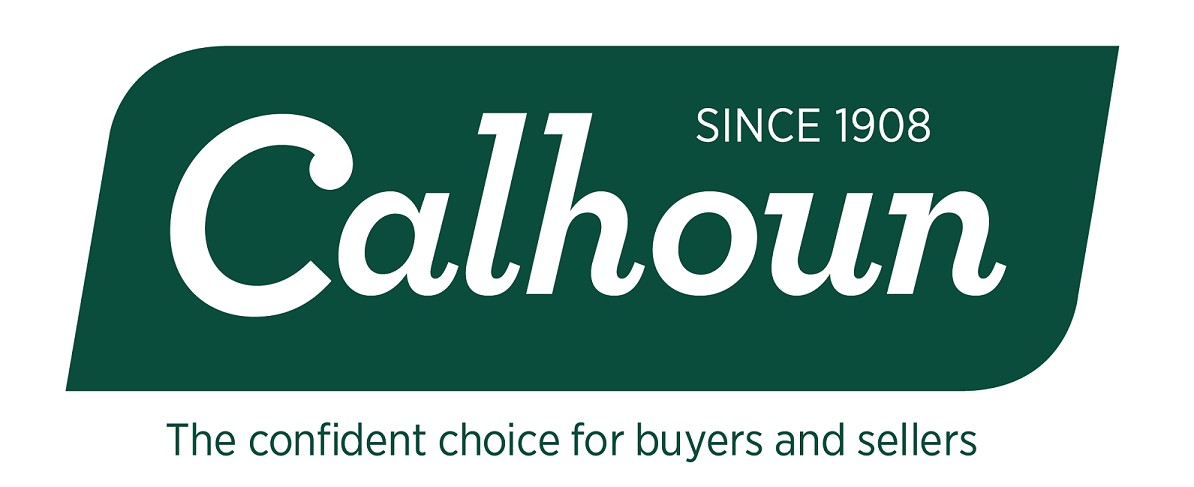What is business succession and transition planning?
Business succession and transition mark key points in a business’ life and the owner’s life. While representing a new era, business succession and transition (BST) requires significant effort and change from everyone involved. BST planning can help ensure long-term, sustainable success and a smooth exit for the owner.
Who can help?
There are a variety of companies, educational institutions, and non-profits specialized in assisting businesses in their succession and transition, including business brokers, local universities, merger and acquisition lawyers, CEO peer groups, and business support organizations.
The Grow Minnesota! team sat down with four business brokers and three educational organizations to break down business succession planning and answer common questions. Click on their name to learn more about their services and when to contact them. Their responses have been condensed, combined, and edited for clarity.
Business broker and merger and acquisition advisor specializing in companies with revenues under $15 million.
WHEN TO CONTACT: Whenever the business is ready to go- to- market but will have early initial conversations.
Statewide non-profit based in St. Paul that raises awareness and educates businesses about employee ownership. They have monthly 101 sessions on employee ownership, release articles, meet and teach individuals, and help interested businesses go further, including as a facilitator.
WHEN TO CONTACT: Anytime, happily talk with employees and owners wherever they’re at.
For three decades, we have helped family-owned businesses, closely held companies, and non-profit organizations develop healthy teams and make successful leadership transitions.
WHEN TO CONTACT: Our team of experienced coaches and advisors is ready to help train your future leaders to carry on your vision. Typically, we start collaborating with organizations approximately five years before their anticipated transition.
The Family Business Center is a community-facing service to help family businesses learn from experts and connect with peers. After 30+ years of experience, they can help navigate difficult conversations and get ahead of issues, including BST.
WHEN TO CONTACT: Anytime, best is 5-10 years out.
Two business brokers housed under one roof. Sunbelt specializes in companies with revenues under $5 million and True North serves businesses with revenues greater than $5 million.
WHEN TO CONTACT: Gladly meet with businesses at any time. Ideally contact them 2-3 years out, 1 year is fine as well.
Business broker and advisor that facilitates the sale of businesses and assists on mergers and acquisitions.
WHEN TO CONTACT: Ideally 2-3 years out.
Educational institution that offers classes, educational videos, conducts state education tours, and conducts research related to BST. While UMN Extension is open to anyone, they’re particularly well-versed in rural business. They seek to “poke the bear” around BST conversations.
WHEN TO CONTACT: Welcome and support people at any stage, but over 3-5 years away from transition is best.
When to start succession and transition planning?
In every interview, it was clear that it is never too early to start planning. Ideally, begin with the end in mind. It is recommended to think about transition when you build a business plan, but a business can plan for its succession and transition at any point in the firm’s life and can change and amend the plan to grow with the business. Succession planning will often help a business build value, improve productivity, and determine what’s driving value. It’s important to note that most businesses don’t have a formal succession and transition plan and there is no one-size-fits-all for transition. Even some initial planning can help prepare a business for the future.
Where to start?
The local Small Business Development Center (SBDC). SBDCs provide counseling and training to small businesses to support business start-ups and existing business expansion. There are nine regional SBDC offices in Minnesota that offer free consulting from certified exit planners. Find your local SBDC here https://mn.gov/deed/business/help/sbdc/find-sbdcs/ to set up a meeting to discuss succession planning.
Planning timeline
5+ years out:
- Consider what you want your exit to look like and what that means for your and the business’s future.
- Begin engaging with local resources.
- Talk with key employees. Where do they want to be in 5-10 years and how will that affect the company?
3-5 years out:
- Start conversations with your various advisors and professional service partners. For example, talk with your CPA, attorney, estate planner, or financial advisor, and begin learning more about the process.
- Ensure you are reporting your income on tax documents and that the accounting is consistent.
- Research and learn more about valuations. This can help you better understand your specific value drivers.
- Finally, focus on delegating and making the day-to-day operations of the business less owner-centric.
2-3 years:
- Work with a tax advisor and determine what you are likely to net from a sale. Look at the future and determine what you need financially to be happy going forward.
- Start tracking and reporting the true earnings of the business. The most important data points will be EBITA and Seller’s Discretionary Earnings (SDE).
- Identify growth opportunities and potential risks. Some business brokers will do a free valuation during this time.
Less than 1 year:
- Begin getting ready to go to market, this will typically take as little as a week up to three months.
- Once on the market, a business will typically sell within 6-13 months.
- Expect a transition period of 30 days to 1 year, depending on the sale terms.
- Announce the sale to employees then publicly and stabilize relationships, especially with clients and vendors.
- Note: consult with your advisors on when to announce the transition, there are often disclosure and confidentiality rules that must be followed.
How does the planning process change for Family Businesses?
Succession encompasses a broad set of considerations for the future of the business; the transition itself is only part of the larger succession plan. While this is true of any business, it is particularly applicable to family businesses.
Around five years out, start having conversations about ownership goals and identify the next generation of potential owners. Who in the family has interest and what would those roles look like? All generations need to identify their reason for running the business and their individual goals. Do the values and goals align across generations?
Then bring in the younger generations and begin teaching them about the business. Move them through different roles and further develop the new leadership. Start with small handoffs and build trust.
Finally, set agreed-upon expectations for what retirement looks like. Often the older generation will remain involved, whether as an advisor, cheerleader, philanthropic face, or more. Overall, it’s a balancing act to figure out what set of arrangements is optimal for your business. There is a significant amount of knowledge and experience that the older generation can pass on as the younger generation steps up to take a more independent role in running the business.
What are some common mistakes and pitfalls?
The succession and transition experts shared three recommendations to avoid common mistakes that businesses can make in this process.
First, create clear and detailed documentation of the businesses’ processes. Owners are often very involved with running and managing the business. Having well-documented processes of business operations, like procurement, sales, and payroll, will smooth the buyer’s transition and may help increase the sale price. It will also benefit the business.
Second, the buyer and seller need to establish and keep trust. Tell a story, show a bright future and position the business well. But be clear on financial history and any potential problems, as they will be revealed during due diligence.
Finally, selling a business is more than a financial transaction, it’s an emotional process. Everyone wants to sell when the time is “right”, but this is different for each person. Having clear financial goals and a plan for after the sale will help determine owner readiness. Ultimately, be ready and be serious when you go to sell.
What’s one piece of advice you’d share with business owners?
There are many ways to transition a business, but every owner has to exit the business at some point. Having an exit plan is an essential part of the business’ strategy. Just learning about succession planning is okay; there are resources and educational events available for businesses to learn in a safe and confidential setting. But, spending time on the business, not in it, is crucial to building long-term growth.
What are some ways to make business more appealing to sellers?
Ultimately, a buyer cares about the growth vs risk potential of a business. So, consider your risks: employment agreements, customer contracts, real estate, suppliers, technology, etc. Identify areas that could hinder an outside party’s ability to run the company.
On the flip side, address successes, showcase uniqueness, have contracts in place and good customer decentralization, track key performance metrics, emphasize growth and win rates, create a future project roadmap and expansion plans, and show sustainability. Fundamentally, the buyers want a good return on their investment, to pay off debts and secure a good salary.
What if it’s an emergency situation?
Ultimately, even the best plans can go astray and emergency situations happen. An emergency doesn’t mean the end. Brokers have dealt with it before and can help. Any plans you have will give you a head start, even if it’s small. If you can, create an emergency exit plan in advance. There is no perfect transaction; even if it’s not ideal, it’s possible. Rely on your trusted advisors and professionals.
Currently, buyers can use SBA 7(a) and 504 loans to finance a complete purchase of a business. In November 2023, the US Small Business Administration will provide financing to borrowers to purchase part of a business. The partial sale will allow sellers to sell a percentage of the company then they can complete the sale at a later date. What does this mean for business succession?
Generally, partial sale of a business is more common with large companies, but smaller companies are catching up. The preparation process is fairly similar to a complete sale, but requires more trust and partnership between the seller and buyer. Ideally, a partial sale will help keep continuity through accounting, vendor relationships, employees, processes, documentation, and increase buyer confidence while increasing overall seller payout.
The update will be particularly useful for employee ownership, specifically ESOPs and employee ownership trusts.
FLIP SIDE: Any advice for potential buyers?
2023 is still a seller’s market. There are more buyers than sellers, although it is calming down. Knowing your own risk tolerance is important. Buyers should be serious when entering a conversation and may need to be aggressive. Business brokers shared that it’s not uncommon for sellers to have 20-30 potential buyers sign non-disclosure agreements to receive detailed information about a company and have 2-3 purchase offers from that.
If you’re an individual, work with a bank before entering the market. Understand what the purchase process looks like. For example, if you’re using a broker, the seller will pay the fees. Be knowledgeable about relevant financials, cashflow, and terms (namely seller’s discretionary earnings).
Finally, know the types of businesses you’re interested in and where you can add value. But be open to other ideas and focus on transferable skills. What does the buyer have to offer and what makes them excited? What are the owner’s weaknesses? Buy something you’re passionate about. Value is driven by understanding needs, wants, and desires; seldom is anything perfect at face value, creativity helps.
One final note, while employee ownership tends to be initiated from within the business, especially for ESOPs, it’s not impossible convert to employee ownership through a transition. Meet the owner where they’re at and use an angle they’re interested in.
Need more assistance?
The Grow Minnesota! team at the Minnesota Chamber of Commerce can provide additional assistance to help your business access the above resources.
Contact growminnesota@mnchamber.com for more assistance.











